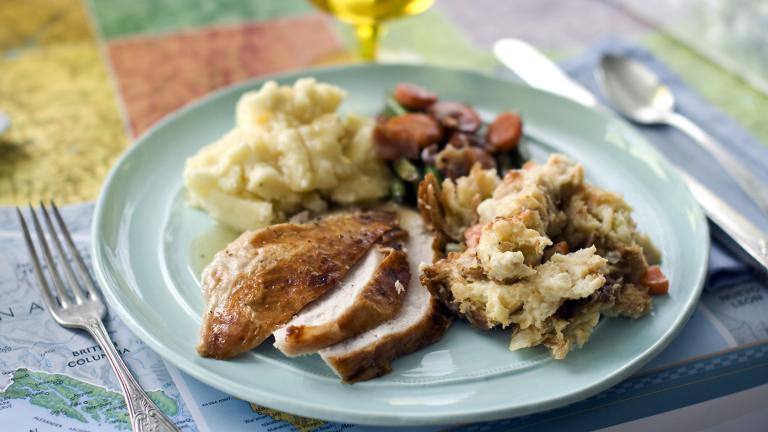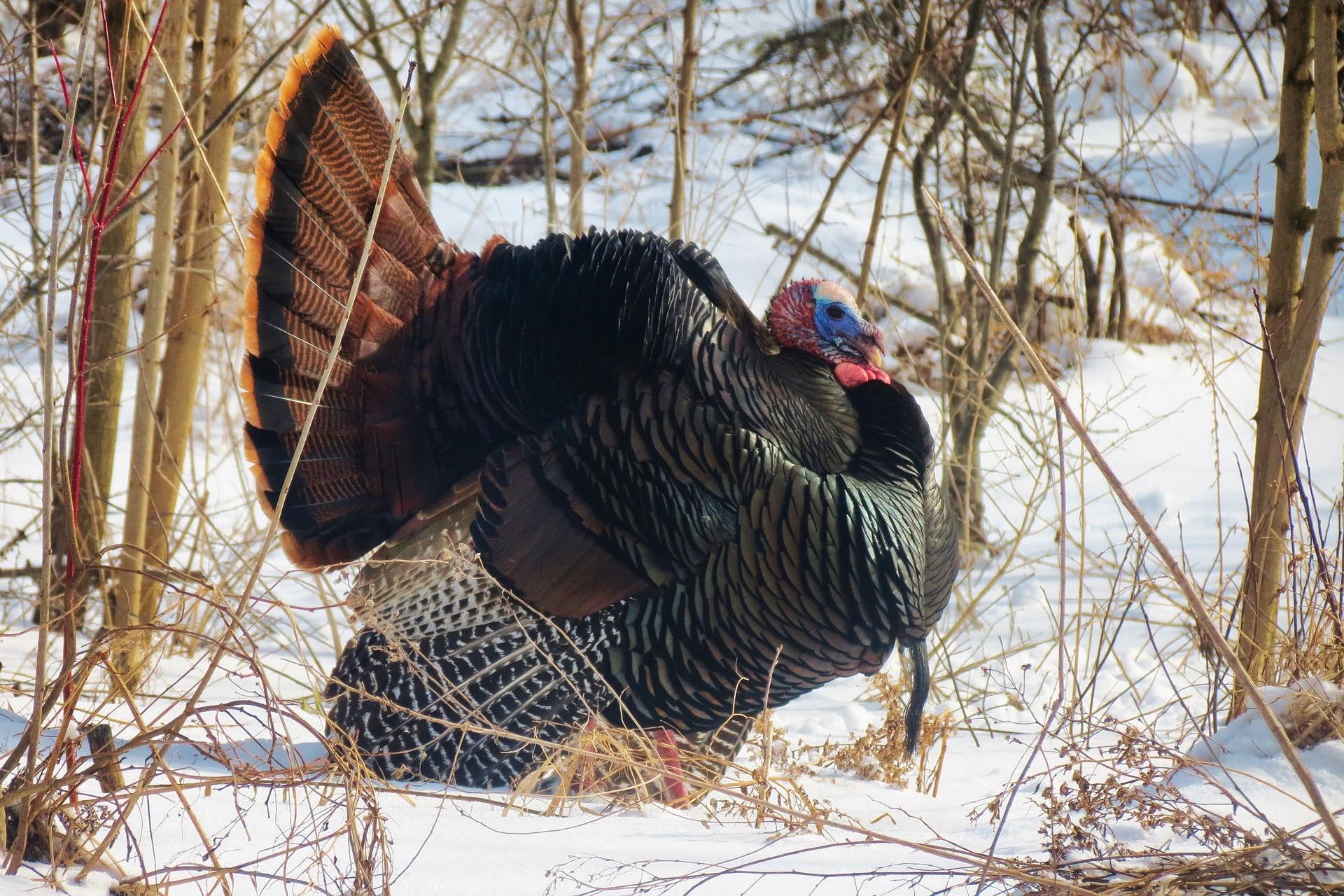 (Carl James / Pixabay)
(Carl James / Pixabay)
This year, don't head to your Thanksgiving gathering empty-handed. Take these wild turkey fun facts with you, and use them to fill awkward silences.
We guarantee your hosts will appreciate your contribution more than another cranberry salad.
Let's talk turkey, one of North America's great native species.
1. Birds of a feather...
Individual turkeys have some 5,000 to 6,000 feathers. Each of the five subspecies of North American wild turkey has slightly different plumage, but brown is the dominant color. Domesticated turkeys — the birds destined for the dinner table — tend to be white. See: Liberty and Bell, the lucky duo pardoned by President Joe Biden.
2. ... don't always flock together
Wild turkey toms (males) and hens (females) lead fairly separate lives. Apart from breeding season, the dudes hang out in all-male flocks. Hens — who shoulder 100% of child-rearing duties — form their own society with their chicks.
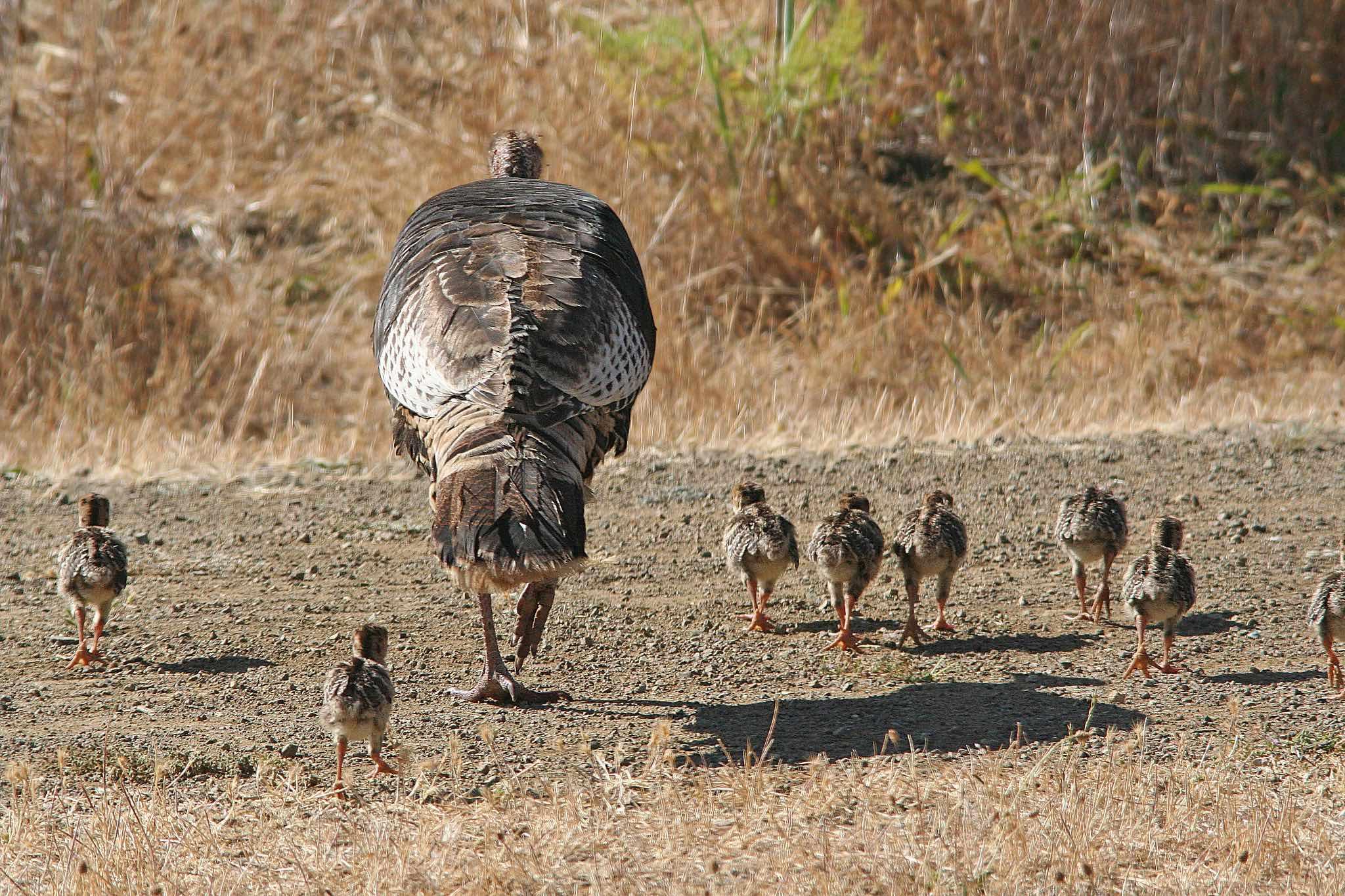 Wild turkey mom with chicks. (Alan Schmierer / Flickr Creative Commons)
Wild turkey mom with chicks. (Alan Schmierer / Flickr Creative Commons)
3. Land, air and sea
For butterballs, turkeys sure are surprisingly fleet-footed. They can run up to 18 miles per hour and, even more impressively, fly at bursts of 50 mph, according to the U.S. Fish and Wildlife Service. That's right, we said fly. Wild turkeys' wings aren't just for show (they also use them for slap fights).
Allow us to further blow your mind: If they have to, turkeys can swim. They tuck their wings in close, spread their tails and kick.
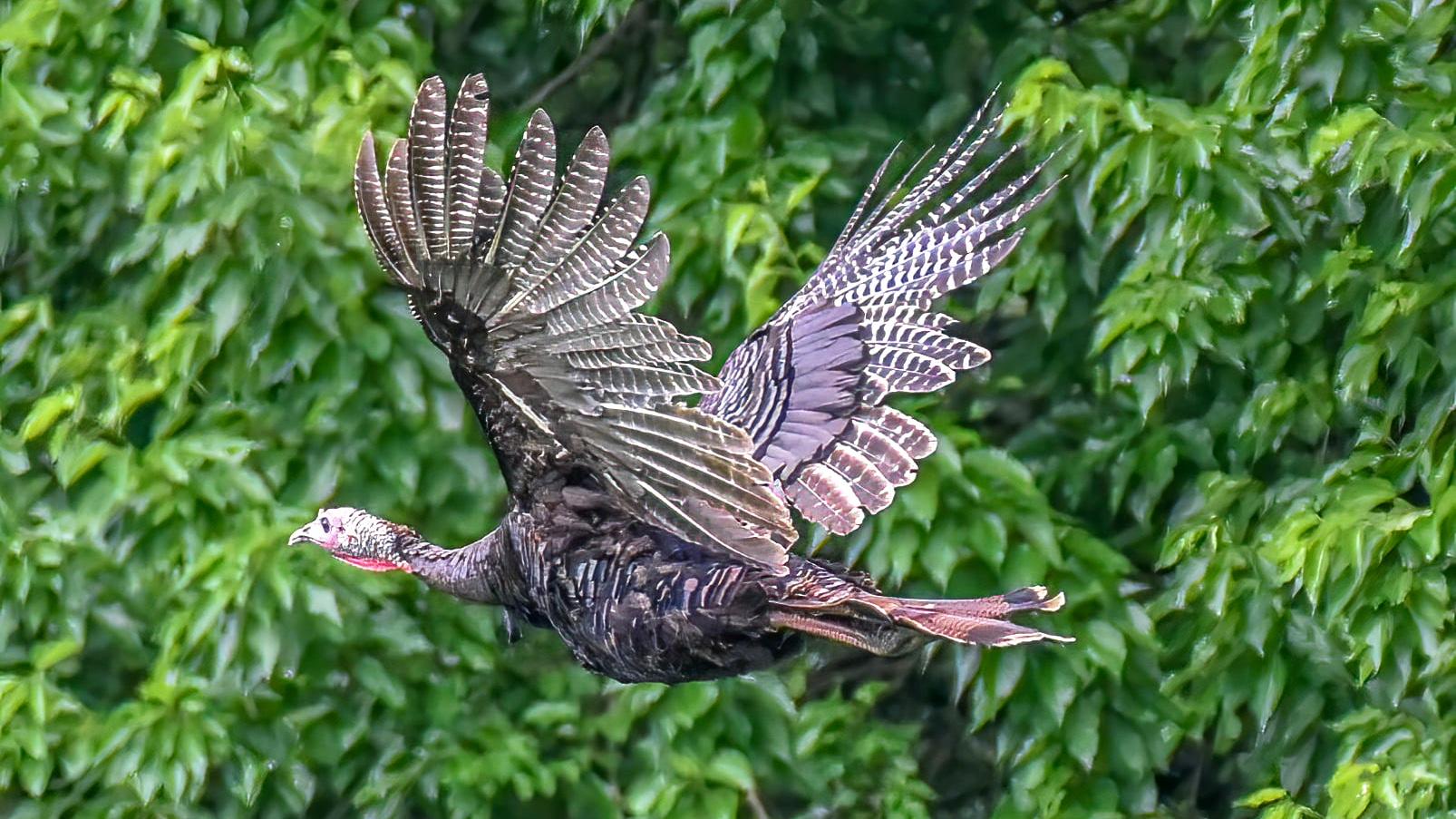 A wild turkey takes flight at Midewin National Tallgrass Prairie. (Veronica Hinke / USDA)
A wild turkey takes flight at Midewin National Tallgrass Prairie. (Veronica Hinke / USDA)
4. Warts and all
Between spurs, wattles, caruncles and snoods, wild turkeys are heavily accessorized with weird body parts.
Spurs are bony spikes on the back of each lower leg; the wattle is the flap of skin under the turkey’s chin; caruncles are fleshy bumps on the head and throat; and the snood is a fleshy flap that hangs from the beak.
5. Mood swings
A wattle’s color is affected by blood flow, which makes it something of a mood indicator. During mating season, extra blood flows to a male tom’s wattle, turning it bright scarlet. A white wattle could be a sign of a sick turkey, and the wattle looks blue when a turkey is scared.
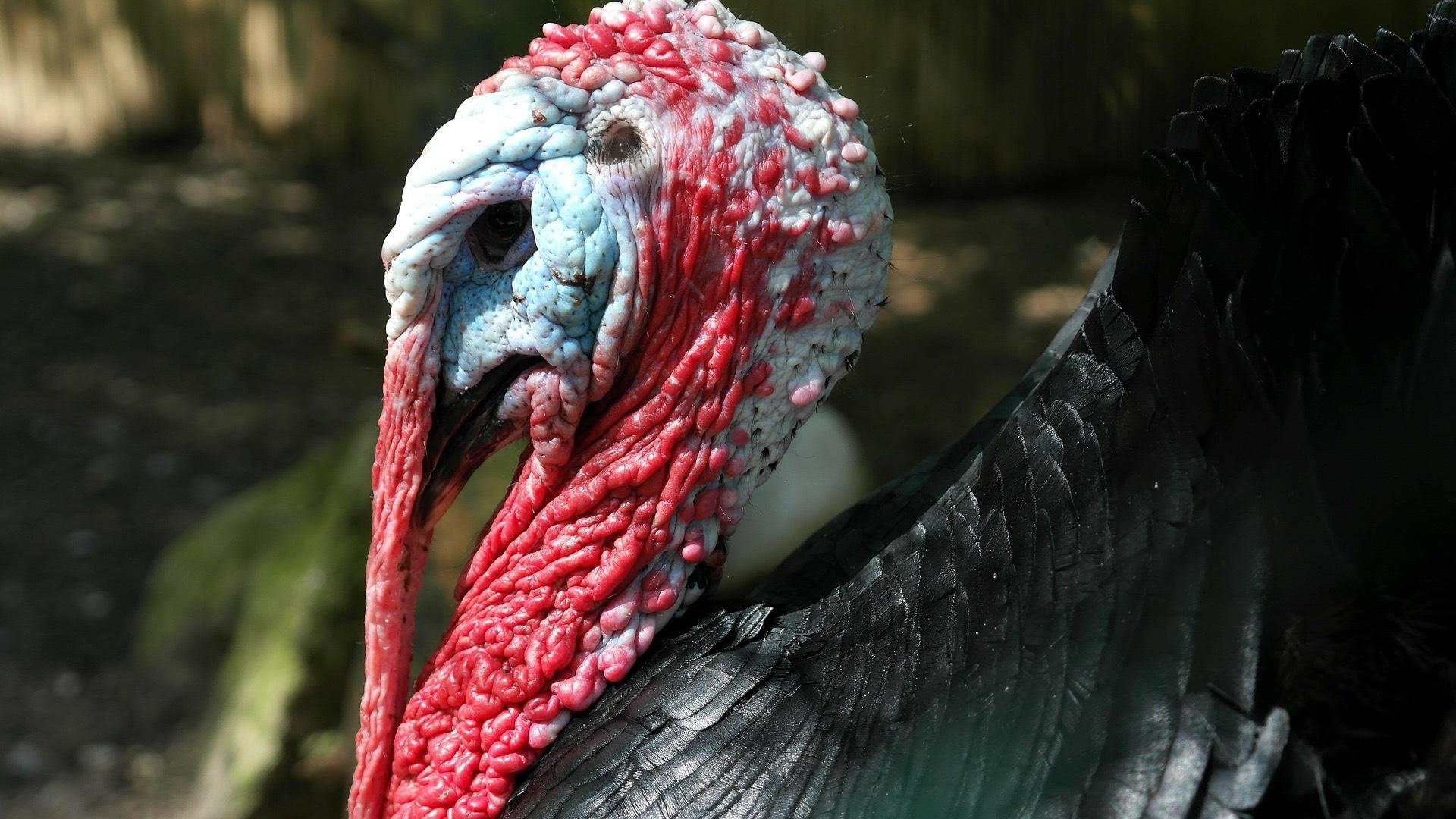 A wild turkey's wattle serves a number of purposes, from releasing heat to attracting a mate. (Rita E / Pixabay)
A wild turkey's wattle serves a number of purposes, from releasing heat to attracting a mate. (Rita E / Pixabay)
6. Gobbledygook
It's true, turkeys do say “gobble, gobble.” But their vocabulary also includes cackle, kee kee and yelp.
7. Bathroom break
This next fun fact is sure to be a winner at the kids' table.
Did you know you can tell a turkey's age by looking at its poop? The larger the diameter, the older the bird. You can also tell the sex of the turkey that left the droppings: Male droppings are j-shaped; females' are spiral-shaped.
8. Strength in numbers
U.S. farmers raise more than 200 million turkeys annually for consumption. By comparison, the entire wild turkey population is approximately 7 million.
The bird almost went extinct in the 1900s due to overhunting and habitat loss, but conservation efforts brought the wild turkey back from the brink. If you're ever in southern Illinois, Crab Orchard National Wildlife Refuge is a great place for turkey watching.
9. Close shave
Male turkeys typically have a “beard,” and if you're guessing it grows from the wattle, well that would make sense, but you'd be wrong. The beard is a patch of coarse feathers that springs from the center of the bird's breast.
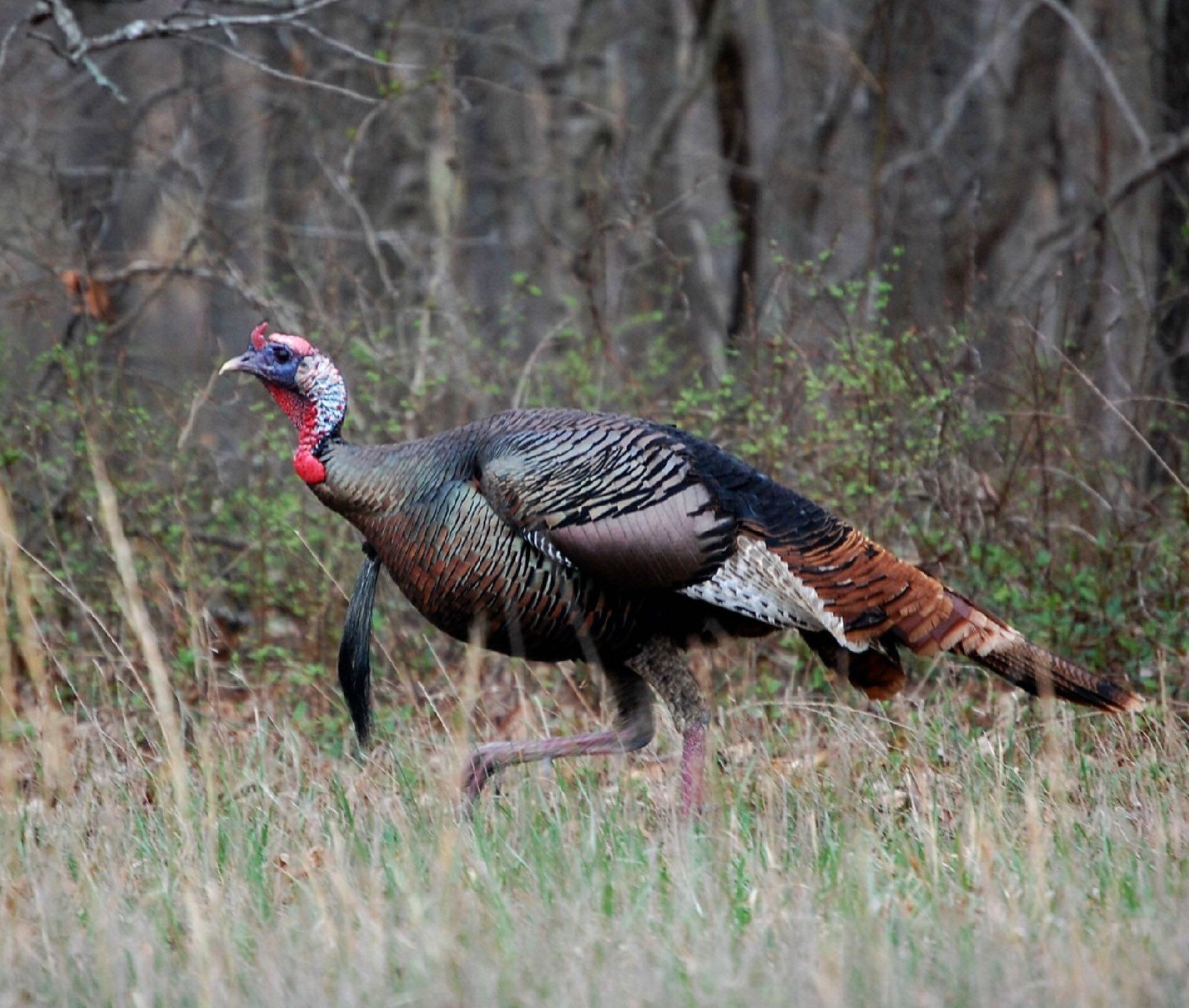 A wild turkey's beard hangs from its chest, not its neck. (Midnight Believer / Flickr Creative Commons)
A wild turkey's beard hangs from its chest, not its neck. (Midnight Believer / Flickr Creative Commons)
10. Odd man out
In the turkey family, the Ocellated turkey is that relative who always shows up to gatherings way overdressed for the occasion.
The Ocellated is actually a separate species from the North American wild turkey, found in parts of Mexico, Belize and Guatemala. With its stunningly colorful feathers, this turkey looks more like a peacock, and maybe that's why it doesn't get invited to Thanksgiving dinner.
Contact Patty Wetli: @pattywetli | (773) 509-5623 | [email protected]

